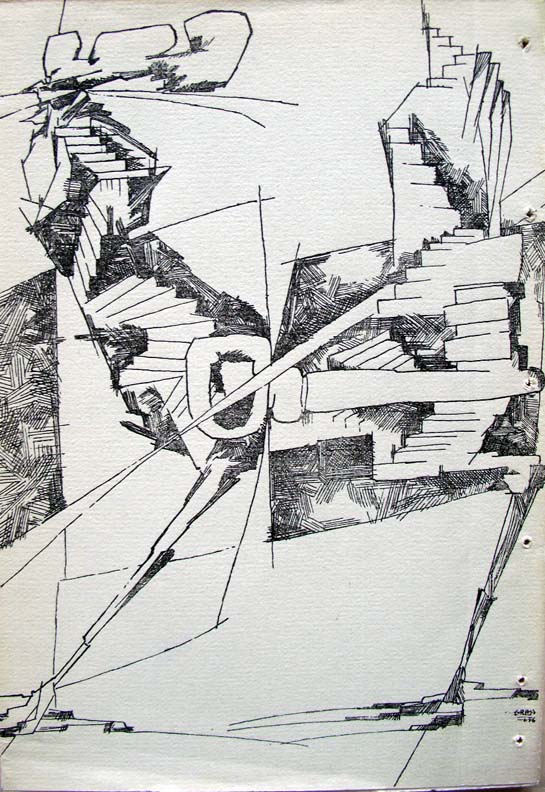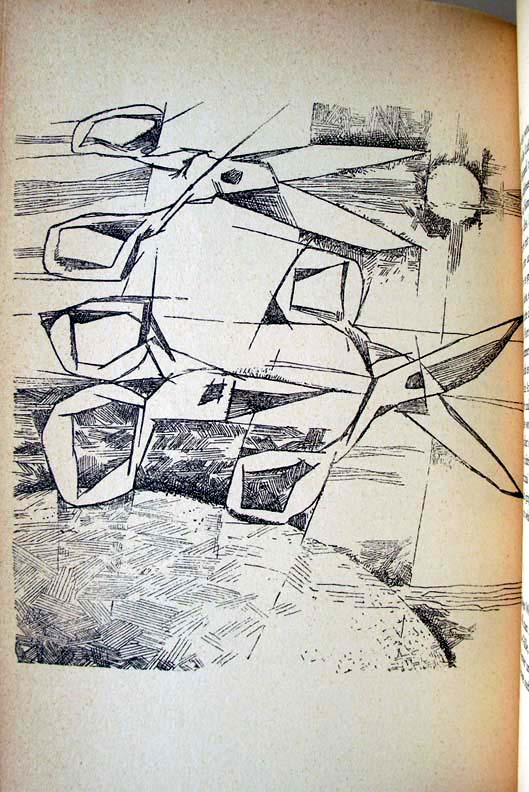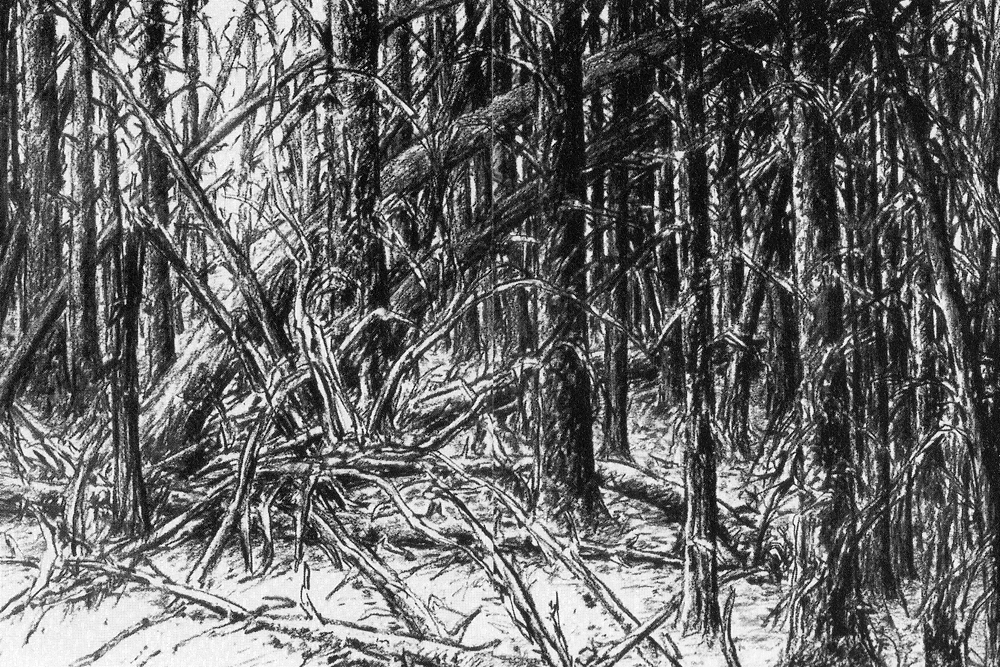【Watch Hugas Online】
A Sensual Act
Look

From Die Vorzüge der Windhühner (The Advantages of Windfowl), 1956.
I started writing and drawing at an early age … My first book was a book of poetry and drawings. Invariably the first drafts of my poems combine drawings and verse, sometimes taking off from an image, sometimes from words … With drawing, I am acutely aware of creating something on a sheet of paper. It is a sensual act, which you cannot say about the act of writing. In fact, I often turn to drawing to recover from the writing.
—Günter Grass, the Art of Fiction No. 124, 1991
That “first book” Günter Grass refers to is Die Vorzüge der Windhühner (The Advantages of Windfowl), from 1956; Princeton’s Graphic Arts Collection has a few of the lithographs on their site. As Martin Esslin writes, “It is hard to tell whether the poems are there to illustrate the drawings, or the drawings to illustrate the poems”—which accords with Grass’s fairly circular description of his process. Here’s another:

Not much of Grass’s prolific visual work is available online, but Millî Reasürans, a Turkish gallery, has a few images of the disquieting engravings Grass did for his 1977 novel, The Flounder, among them this unrepentantly phallic episode:

An engraving from Der Butt (The Flounder), 1977.
There are also a few drawings from Totes Holz(Death of Wood), which Grass discusses in his Art of Fiction interview:
I have seen and drawn dying, poisoned worlds. I published a book of drawings called Death of Woodabout one such world, on the border between the Federal Republic of Germany and what was then still the German Democratic Republic. There, well in advance of the political union, a reunification of Germany occurred in the form of dying forests. This is also true of the mountain range on the border of West Germany and Czechoslovakia. It looks as if a slaughter had taken place. I drew what I saw there.

From Totes Holz (Death of Wood), 1990
John Russell wrote more broadly about Grass’s art in the New York Times in 1983:
His work relates to the ancient tradition in German art by which there is almost nothing of importance that cannot be made known to us with black ink on white paper. The marks in question may be made by cutting into blocks of wood, or with etching needle and copper plate, or with everyday pen and ink. Either way, black and white can tell us all that we need to know.
Search
Categories
Latest Posts
Robin Triumphant
2025-06-26 04:43NYT Strands hints, answers for May 5
2025-06-26 03:14Popular Posts
Best Max streaming deal: Save 20% on annual subscriptions
2025-06-26 04:01Huawei Mate 30 Pro is here with extra curvy screen, powerful cameras
2025-06-26 03:53Sheryl Sandberg leans into Trump with pro
2025-06-26 03:19Amazon Prime Grubhub deal: Save $10 off orders of $20 or more
2025-06-26 02:43Featured Posts
Bargaining For the Common Good
2025-06-26 04:44Google honors 'Friends' anniversary with 7 Easter eggs across search
2025-06-26 04:35Sheryl Sandberg leans into Trump with pro
2025-06-26 03:55Shop Owala's Memorial Day Sale for 30% off tumblers
2025-06-26 02:09Popular Articles
Robin Triumphant
2025-06-26 04:42Sheryl Sandberg leans into Trump with pro
2025-06-26 02:59Tom DeLonge from Blink
2025-06-26 02:37Philips now allows customers to 3D print replacement parts
2025-06-26 02:31Newsletter
Subscribe to our newsletter for the latest updates.
Comments (2844)
Star Sky Information Network
A worthless juicer and a Gipper-branded server
2025-06-26 04:43Steady Information Network
Bandcamp pledges 100 percent of its share of Friday's profits to ACLU
2025-06-26 03:48Reality Information Network
Tom DeLonge from Blink
2025-06-26 03:10Style Information Network
Apple Arcade: How to decide where to start, based on your tastes
2025-06-26 02:53Sharing Information Network
Every MCU movie villain ranked, from "Iron Man" to "Thunderbolts*"
2025-06-26 02:40